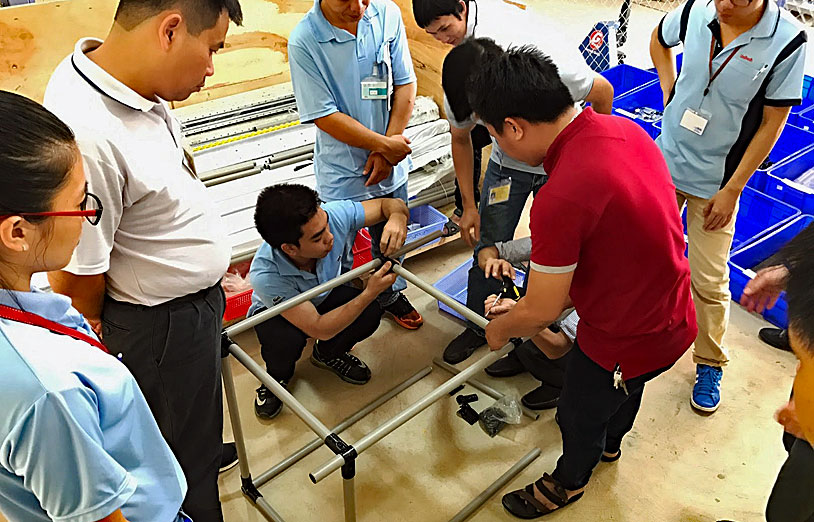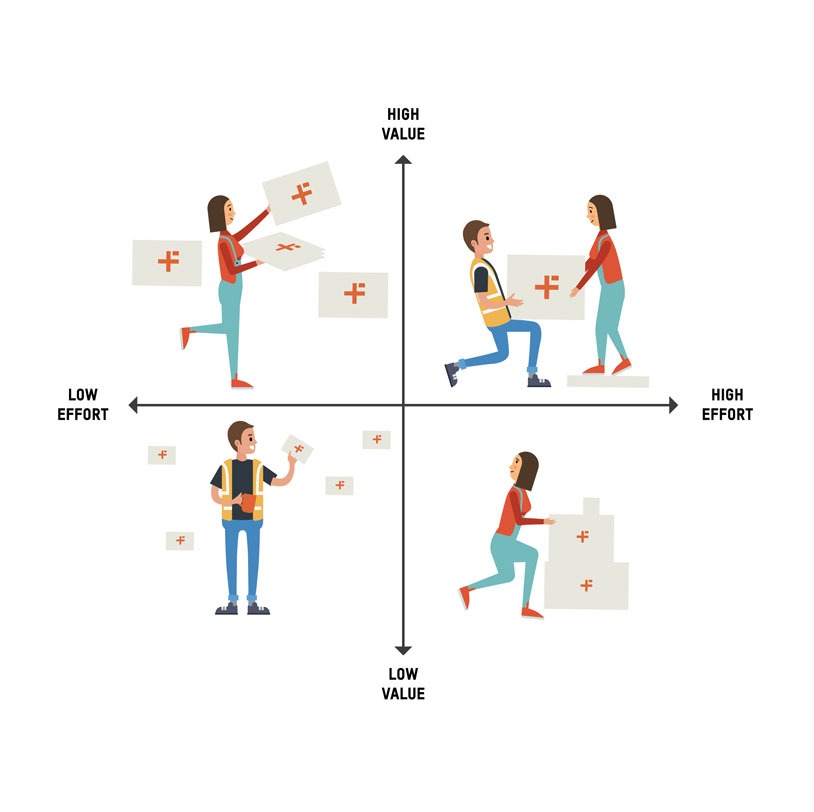
Post
HOW TO DO A 5S AUDIT WITH YOUR SMARTPHONE
Case Study
HOW COGECO INCREASED ITS PROFITABILITY BY IMPLEMENTING A LEAN SOLUTION
Case Study
EMPLOYEE'S CREATIVITY CONTRIBUTES TO THE DEPLOYMENT OF THE LEAN CULTURE
If you’re thinking of introducing lean manufacturing on the shop floor, you may have noticed that some production employees are hesitant to shift their habits. For example, they may say that their way of doing things has always generated good results or that the proposed modifications don’t apply to their current situation. Rest assured, your predicament is common. Most businesses in the manufacturing sector have faced this problem at one time or another. Thankfully, there are many methods to overcome resistance to change.
Estimated reading time: 8 minutes


Begin by stating the motive(s) for the transition to your team. Some ideas could be to be more competitive, to face growing demand, or to serve your customers better. However, avoid basing your explanations solely on profitability. If the proposed changes are purely for financial reasons, you risk not getting everyone on board.

Before beginning the Lean training process, plan to have the appropriate resources. Smaller businesses often retain the services of an external instructor. In the eyes of the staff, he can lend credibility to the process thanks to his professional expertise.
If you do use an external consultant, be sure the person overseeing the Lean process within your organization (the Lean sensei) works with the trainer to provide insight into the company’s situation. The sensei can also guide the consultant’s presentation and play a part in the discussions.

Before engaging in Lean practices, your employees will need to receive basic training on the Lean culture to understand it and speak its unique language. At the end of the process, they should be familiar with founding principles such as 5S and various types of wastes, and knowing what added value does and doesn’t consist of.
To win over those who are most reticent, trainers can show testimonials, pictures, and videos of companies who have gone through Lean improvements. Doing so is a lighter and more user-friendly means of convincing instead of text-heavy presentations that don’t always engage those in attendance.


To convince employees of the benefits of the upcoming changes, suggest that they visit non-competitive plants, which recently undertook the same process as yours. If there is no one you can contact, search on LinkedIn or call organizations that do tours in Lean facilities, such as the Association for Manufacturing Excellence, the Gemba Academy, the Lean Enterprise Institute, or the Mouvement Québécois de la qualité.
While it may be challenging to get employees on-site, those who do go will become your most valued spokespeople. Why? Because they will have seen the transformation for themselves and, most importantly, talked with employees who carry out similar tasks. The latter will be able to explain how they experienced the change and the advantages of working in a Lean environment. Such discussions can reassure those who are particularly hesitant regarding the proposed adjustments.
Our team at Flexpipe recently toured the BRP snowmobile plant. After the visit, our five production team leaders exclaimed, “Wow, the production floor is open, airy, and clean. We would love to work in an environment like this.”

To display the physical benefits of the ongoing change, choose a high-visibility work cell which will serve as a model. This space will be the designated location to implement your first projects.
Avoid beginning with lengthy, costly, and complicated undertakings. Instead, make small tweaks with a big payoff, such as improving a substandard workstation. Once you’ve finished your first project, ask your employees to examine the issue that has been solved—they’ll have the proof right before their eyes.
Starting small means, you’ll be able to show the results to your team quickly and reduce the risk of failure.


Getting employees involved is the surest way to overcome resistance to change—even if you provide Lean training. You will need to make them understand that the ownership of the transformations doesn’t solely rely on 1 or 2 people; instead, it’s company-wide ownership. That way, a Lean culture will permeate all echelons of the business.
One of the best ways to have team members participate in the transition is to gather their ideas by using a suggestion box or board. Your supervisors and those spearheading the improvement process can also help employees make recommendations on an ongoing basis.
Responding to all suggestions quickly is a robust approach to show that you open to change and innovation.

While having ideas is undoubtedly a good thing, it’s even better to explore them. Encourage employees to lend a hand in crafting the solution by having them sketch out a problematic element in their environment and what could correct it.
If needed, the person leading the improvement process can help the staff realize and refine their ideas. Additionally, he could suggest a brainstorming session among team members to generate further options.

Once you’ve collected the various concepts and encouraged employees to play a role in devising the solution, why not ask them to continue the creation process by, for example, having them design their new lean manufacturing workstation? Besides feeling proud of his accomplishment, an employee can improve upon his workstation again in the future according to the company’s unique requirements, when need be.
One way to make ideas come to life more efficiently is to have tools and necessary materials on hand. A moonshine shop can be an exciting option to provide a creative setting.


Your organization should celebrate both the highs and lows related to the change process. Some businesses offer a reward such as t-shirts, corporate items, or gift cards to participants. The gifts need not be expensive; they’re meant to recognize the employees’ efforts and encourage them to continue the Lean transformation endeavor.
Even with the best intentions, sometimes it’s difficult to overcome resistance to change in some employees. When recruiting, make sure to emphasize flexibility and agility. Ask candidates to give you examples of changes they’ve gone through in past jobs and how they reacted to it—beware of those with a hardline stance or who seem insincere.
____________________________________________________________________________
WHAT CAN FLEXPIPE DO TO OPTIMIZE YOUR PLANT EFFICIENCY?
Flexpipe modular industrial pipe racking system can help you with implementing continuous improvement principles. Your team’s creativity can result in a 10% increase in productivity per year. It has been a proven system for more than 50 years now, which allows to reduce the 8 manufacturing wastes.